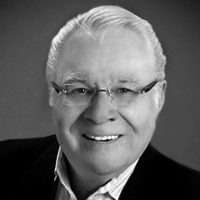Question
I fit a lot of hearing aids in my practice and am always looking for ways to improve my game. Is adding speech-in-noise testing worth the effort, and if so, what will I gain from adding it to my clinical protocol?
Answer
Yes, speech-in-noise testing is most definitely worth the effort and rather than give you just one answer, I'll give you six.
Reason #1: To Address the Patient’s Complaints
If someone walks into an optometrist’s office with the complaint of trouble seeing at a distance, the optometrist would have the person read the Snellen eye chart at a distance of twenty feet. Makes sense, right? What if the patient’s main problem was reading magazines and newspapers? If you’re over the age of 40, you may be starting to have trouble reading from that distance and know exactly what I mean. In this case, the optometrist would have the patient read off a card with different sizes of print at arm's length. This also makes sense. What if the complaint were having trouble differentiating colors? The optometrist would then conduct a standardized test of color differentiation. There are ten different cards that they use for this standardized test. It’s all pretty clear—they do a test related to the complaint.
Now, let's take the typical patient who comes in to an audiologist's office with the complaint of having trouble understanding speech in background noise. If the person is a potential new hearing aid user, that will likely be the complaint in 90% or more of the cases. What does the average audiologist do? Well, most will assess speech understanding in quiet. Isn’t it a bit strange that people walk in with one problem and we do a test for something totally different?
As in the optometrist example, speech-in-noise testing is a way to show the patient that, yes, I understand your problem and, therefore, I'm going to do a test related to why you came to see me in the first place. It helps to foster the professional-patient relationship; it shows that you are listening and you understand their reason for the visit.
Reason #2: Results from Speech-in-Noise Testing Will Help you Select the Best Technology
A common speech-in-noise test is the QuickSIN. When the QuickSIN was first introduced, Mead Killion suggested that it might help determine who really needs directional technology and who doesn't. Today, most everyone is fitted with directional technology, and even basic instruments usually have this feature, so this logic doesn’t really apply anymore. The test results however, will help you to address some other special needs, such as the need for remote microphones. It also may help you make decisions for a unilateral versus a bilateral fitting, or what ear to fit when the patient only wants to purchase one hearing aid. Perhaps, it may even help you decide when to fit a BiCROS if you see that the score is so bad in one ear that the patient may not obtain much benefit if that ear were aided.
Reason #3: To Establish a Baseline for Measuring Aided Benefit
By doing a baseline speech in noise measure, you can later determine the benefits of hearing aids, and demonstrate to the patient that hearing aids indeed work in background noise. Without the baseline measure, you have no reference for aided outcome on the day of the fitting.
Reason #4: To Monitor Performance Over Time, Such as Year Over Year
When you've conducted a very reliable, controlled test you can then monitor changes over time. Research has shown that there is very little correlation between speech in quiet results and performance on a speech in noise test. If you monitor a person over time by using their speech recognition in quiet, you may not identify that their speech recognition in noise performance is going down. Your clinical findings will now be more likely to be in synch with the patient history.
Reason #5: To Assist with Counseling
Now, you have a test that can help you discuss with the patient how they might do in various situations. It will very easily explain why they're having trouble in certain listening situations and you have that information in front of you (you know what SNRs will give them problems). If you do aided testing, which is yet another use of these tests, you now will be able to give them realistic expectations for different types of real-world listening situations.
Reason #6: To Help Patients Make a Decision
Speech-in-noise testing can help patients who are not sure whether or not hearing aids are going to help them. You can sit them in the sound field and do a very quick unaided versus aided speech-in-noise test. The results can give them the confidence that yes, hearing aids really do work and, in fact, they just did better in background noise during this testing, which is the very problem that they reported when they came in. In this case, you should use a relatively soft input level to demonstrate the benefits of audibility. If you use a louder presentation level, and they have only a mild-to-moderate hearing loss, there may not be any difference, aided or unaided.
And a bonus reason: MarkeTrak VIII revealed that when you do speech testing as part of the hearing aid fitting, patient satisfaction and patient loyalty improve. We are not really sure why, as that wasn't specifically asked as part of the survey. It could simply be that the act of doing speech testing gives the patient confidence that the hearing aids are working. Or, knowing the patient’s speech understanding in background prompted the dispensing audiologist to be a better counselor.
For more information, check out the course Signia Expert Series: Speech-in-Noise Testing for Selection and Fitting of Hearing Aids: Worth the Effort? This course discusses the rationale for speech-in-noise testing, reviews common tests and their clinical uses, and includes many case studies with real-world application.

